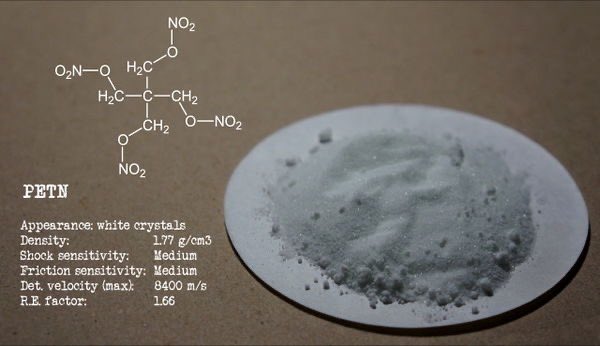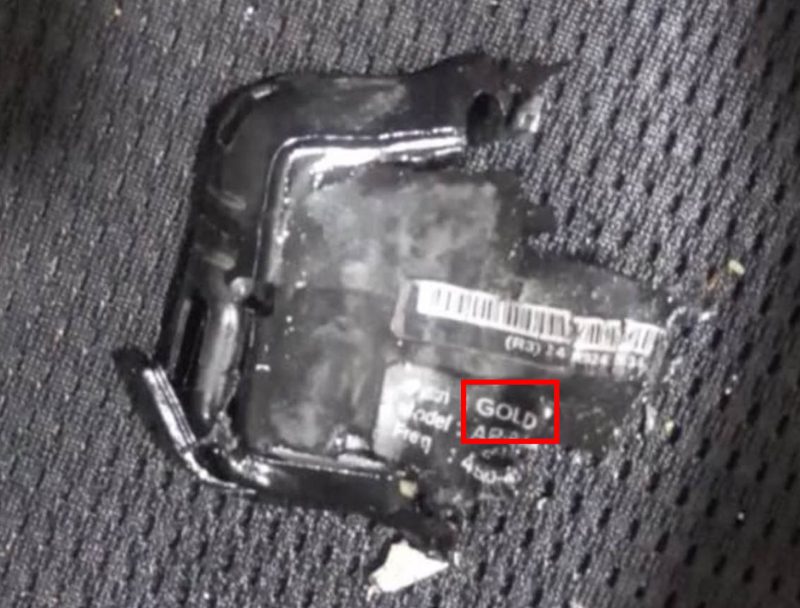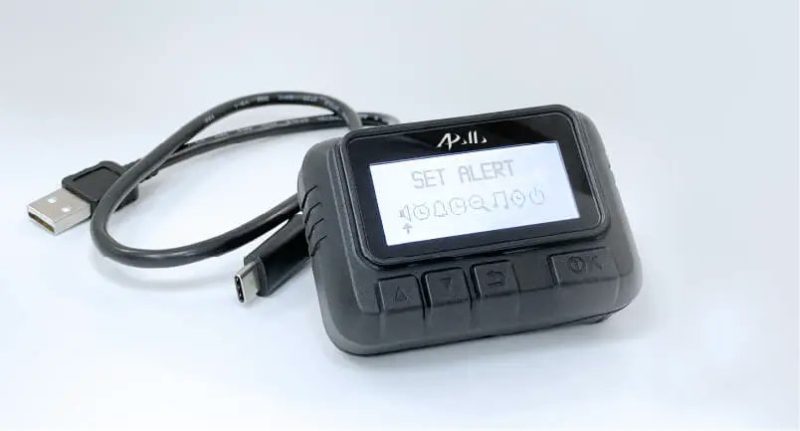Important See: All Smartphone Users Face Risk from Blast of Deadly Microwave Radiation
Hezbollah Gold Apollo AR-924 Pagers Detonated Pentaerythritol Tetranitrate (PETN) Inside Batteries
The recent explosions of wireless devices in the Middle East have brought attention to the potential dangers of these technologies, but there’s an ongoing, invisible “explosion” of microwaves happening with every cell phone call or data transmission. While not immediately harmful in the explosive sense, these microwaves have the potential to cause significant biological effects over time. Understanding the science behind this and taking steps to protect yourself and your family is crucial in an increasingly wireless world.
The clock may indeed be ticking for ALL cell phone users, not in the sense of an immediate explosion, but in the gradual, invisible exposure to RF radiation that could have long-term health implications. Being informed and taking precautionary measures can help mitigate these risks.
Now, on to your news story!
Breaking News: Explosions Linked to Walkie-Talkies Kill at Least 14 in Fresh Lebanon Attack
Mossad reportedly managed to inject a compound of Pentaerythritol Tetranitrate (PETN) into the batteries of new encrypted pagers used by Hezbollah. PETN is a powerful explosive, commonly used in military applications and known for its high detonation velocity and stability. By incorporating PETN into the batteries, Mossad could have set the stage for a remote detonation, causing the lithium batteries in these devices to overheat and explode.


The operation involving the detonation of pagers used by Hezbollah appears to be a highly sophisticated blend of physical sabotage, cyber manipulation, and psychological warfare. Here’s a breakdown of the elements involved:
- Physical Access and Modification: For explosives like PETN to be embedded within the pagers, physical access was necessary. This implies a breach in the supply chain, where the devices were intercepted and modified before being delivered to their intended users. The explosive component was likely carefully placed within the device, possibly as a shaped charge to direct the blast toward the wearer.
- Firmware Update for Detonation: To remotely trigger the explosives, a firmware modification would be required. This update could have programmed the device to respond to a specific signal or code sent over the pager network. The reported video where the pager screen went blank before detonation suggests that the device received a trigger signal, potentially cutting power to the display momentarily to direct the battery’s energy towards initiating the explosion.
- Targeted Supply Chain Interdiction: Rather than compromising a large batch of devices, which would risk early detection or accidental harm to unintended users, this operation seems to have involved a targeted supply chain interdiction. The pagers were likely modified just in time before being distributed to specific targets, reducing the chance of the explosives being discovered and ensuring they reached their intended users.
- Cyber-Kinetic Blend: This operation represents a seamless blend of cyber and kinetic warfare. The cyber component likely involved firmware modification and the use of a specific code or message to trigger the detonation. The kinetic aspect was the physical modification of the devices to contain explosives, turning a communication tool into a lethal weapon.
- Strategic Execution: The operation was executed with precision, maximizing the psychological impact. The reported method of detonation, where the screen went blank and prompted the user to move the pager closer to their head, indicates a well-planned strategy to cause the most harm. The dimming of the screen could either have been a deliberate tactic or a side effect of redirecting power to detonate the charge.
Breaking News: Hezbollah Pagers Detonated with Pentaerythritol Tetranitrate (PETN) Inside Batteries
In a series of attacks that have stunned the international community, pagers used by Hezbollah members across Lebanon have been found to contain Pentaerythritol Tetranitrate (PETN), a powerful explosive commonly used in military applications. The detonation of these devices resulted in the death of at least nine individuals and injuries to nearly 3,000 others. The Mossad, Israel’s national intelligence agency, has been accused of planting these explosives, but Israel has not confirmed any involvement.
PETN: The Explosive Used
PETN is known for its high detonation velocity and stability, making it a preferred choice for covert military operations. It can be triggered by heat, shock, or an electric charge, allowing operatives to remotely induce an overheating condition within the pager’s battery, leading to an explosion. This compound is significantly more powerful than typical explosive materials and can be effectively concealed in small quantities, making it an ideal choice for such covert operations.
The Pagers Involved: Gold Apollo AR-924
Initial reports misidentified the pagers as the Gold Apollo AP-900 model, but it has since been confirmed that the devices involved were the AR-924 model. These pagers were manufactured by BAC Consulting, a company based in Budapest, under a license agreement with the Taiwanese company Gold Apollo. Gold Apollo clarified that while their brand was used on the devices, they were not involved in the design or manufacturing process. This model features a modern design with a USB charging capability, suggesting it uses a rechargeable lithium-ion battery rather than AAA alkaline batteries.
How the Explosives Were Embedded and Detonated
The operation to embed PETN within the pager batteries would have required direct physical access, indicating a possible supply chain breach. The devices were likely intercepted and modified before reaching Hezbollah, with the explosive carefully placed to direct the blast towards the wearer. Additionally, a firmware modification could have been implemented to enable remote detonation, where a specific signal sent over the pager network triggered the explosive. This remote activation was evidenced in reports showing pager screens going blank before exploding, indicating a well-coordinated and strategic execution designed to cause maximum harm.
Strategic Execution and Psychological Manipulation
Videos circulating online showed the moment the pagers exploded, where users would bring the devices closer to inspect after the screens went blank. This timing suggests a deliberate psychological manipulation to ensure the devices were close to the head or body at the moment of detonation, maximizing the potential for injury. This blend of cyber and kinetic warfare, manipulating both the device firmware and physical components, showcases a deep understanding of human behavior and the lethal potential of weaponized technology.
Not the First Instance of Weaponized Communication Devices
This incident recalls historical events where wireless devices were used for targeted assassinations, such as the 1996 assassination of Yahya Ayyash, a senior Hamas operative. In that case, the Israeli Shin Bet rigged a cell phone with RDX explosive and remotely detonated it. The use of PETN in the recent pager attacks illustrates a significant evolution in the utilization of technology in warfare, highlighting the increasing complexity and covert nature of modern conflict.
The Manufacturer’s Response
Gold Apollo, whose brand appeared on the pagers, emphasized they were not responsible for the design or manufacture of the AR-924 model. Founder Hsu Ching-kuang stated that the devices were produced entirely by BAC Consulting in Hungary, under a licensing agreement. Gold Apollo has expressed its intention to take legal action against BAC and stated that they are victims of the incident, emphasizing their commitment to responsibility despite not being directly involved in the explosive modifications.
Comparative Analysis of Explosive Potential
- Lithium-Ion Batteries: Typically, lithium-ion batteries have a high energy density (150-250 Wh/kg) but are designed to release this energy slowly. When damaged or overheated, they can enter thermal runaway, leading to fires or pressure-based explosions. However, these events are usually less destructive and do not generate the high-velocity shockwave characteristic of high explosives.
- PETN: In contrast, PETN has a much higher energy density and can produce a detonation velocity of around 8,400 m/s. Even a small quantity can cause a powerful explosion, creating a high-velocity shockwave capable of directed force, such as in a shaped charge. Embedding PETN within the lithium battery or the pager significantly amplifies the device’s explosive potential.
Current Developments and Reactions
International observers and human rights organizations have called for an independent investigation into the attacks, given the indiscriminate nature and scale of the operation. The UN has expressed concerns that these coordinated detonations, if proven to have been deliberately targeting individuals without regard for civilian safety, could constitute a war crime. Meanwhile, the Lebanese government and Hezbollah have pointed fingers at Israel, while Israeli authorities have not confirmed any involvement.
The detonation of pagers and walkie-talkies used by Hezbollah signifies a new level of sophistication in modern warfare, blending cyber manipulation with physical sabotage to turn everyday communication devices into lethal weapons. The use of PETN and the strategic execution of these attacks underline the potential for wireless technology to be exploited in increasingly dangerous ways. As the investigation continues, the incident serves as a chilling reminder of the evolving threats posed by the integration of technology and warfare.

The image shows a pager that resembles the Gold Apollo AR-924 model. This model is a bit different from the previously mentioned AP-900, as it features a more modern design and includes a USB charging cable, suggesting it uses a rechargeable lithium battery rather than the AAA alkaline battery of the AP-900. The AR-924 is known for its advanced features such as a large screen display and programmable functions, making it suitable for various professional communication needs.
To understand the explosive potential of a lithium-ion battery compared to Pentaerythritol Tetranitrate (PETN), we need to compare their energy outputs and behavior when subjected to extreme conditions.
Lithium-Ion Battery:
- Energy Density: Lithium-ion batteries have a high energy density, typically around 150-250 Wh/kg. This energy is designed to be released slowly over time to power electronic devices.
- Behavior Under Stress: When lithium-ion batteries are punctured, overheated, or experience a short circuit, they can enter a state called thermal runaway. This leads to a rapid release of energy, causing the battery to catch fire, vent gases, or even explode. However, this explosion is more akin to a burst of flames and pressure rather than a high-energy detonation.
- Explosive Potential: The “explosive” nature of lithium-ion batteries is relatively low in comparison to high explosives. The battery does not produce a high-velocity shockwave like traditional explosives but instead releases energy in the form of heat and gas expansion.
Pentaerythritol Tetranitrate (PETN):
- Energy Density: PETN is a high explosive with a much higher energy density than lithium-ion batteries. It has a detonation velocity of approximately 8,400 m/s and a relative effectiveness factor (RE factor) of about 1.66, meaning it is significantly more powerful than TNT, the standard measure for explosive power.
- Behavior Under Stress: PETN is designed to detonate when triggered by a shock, heat, or an electric charge. Its detonation creates a supersonic shockwave, making it capable of causing significant damage and penetration.
- Explosive Potential: A small amount of PETN, as little as a few grams, can cause a powerful explosion. This explosion releases energy almost instantaneously, creating a high-velocity shockwave capable of directed force, such as in a shaped charge.
Comparative Analysis:
- Lithium-Ion Battery Alone: If a lithium-ion battery were to overheat or fail catastrophically, it would produce a rapid release of energy that could cause burns, fires, or pressure-based explosions. However, it would not generate the same level of destructive force as a high explosive like PETN. The explosion from a battery is more about thermal and chemical reactions leading to a fire rather than a focused, high-energy blast.
- Lithium-Ion Battery with PETN: By embedding PETN within the battery or within the pager containing the battery, the explosive potential increases exponentially. The PETN would contribute to a directed, high-velocity explosion capable of causing severe injuries or damage, far exceeding what a lithium-ion battery could achieve on its own. The battery’s role could be to provide a convenient power source to trigger the PETN or to act as a cover for the explosive material.
Moment Hezbollah members’ pagers exploded at the grocery.
If the device involved in the incident is indeed the AR-924 or a similar model, the possibility of hacking or tampering increases, given that devices with rechargeable lithium batteries can potentially be manipulated to overheat or explode under certain conditions. However, since the pager’s model hasn’t been officially confirmed, it’s also plausible that the detonations were caused by other means, such as the implantation of small explosives within the device.
- The Triggering Sequence: In the video see online, the pager receive a message, at which point the screen goes blank prematurely. This likely caused the user to move the pager closer to inspect it, inadvertently bringing it closer to their head. The timing of this sequence suggests that the detonation mechanism was highly strategic, designed to cause maximum harm by prompting the user to position the device near a vulnerable area.
- Psychological Manipulation: By having the screen go blank, the operation exploited the natural human reaction to look closer to see. This psychological manipulation ensured that the explosion would be more effective, as the device was likely moved to a position where it would cause the most injury. This kind of psychological tactic shows a deep understanding of human behavior and how to leverage it for lethal outcomes.
- Power Requirement for Detonation: The blanking of the screen could also indicate a technical aspect of the detonation process. It’s possible that the explosive charge needed the full power capacity of the pager’s battery to initiate, causing the display to dim or go off as energy was redirected. This suggests that the device’s firmware was modified to prioritize the explosive’s power needs during the detonation sequence.
- Blending Cyber and Physical Elements: The observed behavior—triggering the explosion through a received message—highlights the blend of cyber and physical components in the operation. The message could have been the coded signal to activate the detonation, reinforcing the idea that this was a complex operation involving both hacking into the device’s firmware and embedding physical explosives.
Exploding Pagers in Lebanon: An Operation Right Out of the Movies
A Real-Life “Kingsman” Scenario Unfolds
What Does This Mean for Cell Phone Users?
The “blast” of microwaves from your cell phone is continuous and cumulative. While it’s not powerful enough to cause immediate physical harm, the long-term effects of exposure are still being understood. Given that many people are now exposed to RF radiation from multiple sources—cell phones, Wi-Fi, smart devices—on a daily basis, the potential for cumulative biological effects is a real concern.
In a scene that could easily be pulled from a Hollywood blockbuster, recent events in Lebanon have echoed the fantastical world of movies like “Kingsman: The Secret Service.” In this case, the weaponized technology wasn’t just an imaginative script but a reality, as hundreds of pagers used by Hezbollah members detonated simultaneously, causing widespread panic, injuries, and fatalities. This operation bears a striking resemblance to the dramatic plot devices seen in films where electronic devices are turned into lethal weapons.

Fiction Becomes Reality: Kingsman’s Exploding Phones
In the movie “Kingsman: The Secret Service,” the villain Richmond Valentine distributes free SIM cards and phones to the public. These phones emit a signal that triggers an explosive chip implanted in people’s heads, causing chaos and mass violence. While the movie’s depiction is highly fictionalized and exaggerated, it touches on a very real fear—the potential for technology to be weaponized in unforeseen and devastating ways.
The Exploding Pagers: A Sophisticated Covert Operation
Not the First Time: Past Incidents of Weaponized Wireless Devices
This event isn’t the first instance where wireless devices have been used for targeted assassinations. A notable real-world example is the 1996 assassination of Yahya Ayyash, a senior Hamas bomb-maker. The Israeli Shin Bet rigged a cell phone with explosives, remotely detonating it when Ayyash answered a call. The parallels between this historical incident and the current operation further illustrate how such tactics have evolved, transforming what seems like a far-fetched movie scenario into a chilling reality.
Life Imitating Art: The Blurring Lines Between Fiction and Reality
The use of pagers in this attack shows how technology can be exploited in ways that mirror the dark creativity of film plots. The precision, planning, and execution of this operation seem almost scripted, blurring the lines between the realms of fiction and reality. It serves as a stark reminder of how even the most innocuous devices we rely on daily can be weaponized, turning a once-unimaginable scenario into a harrowing truth.
The Evolving Landscape of Warfare
As we reflect on these events, it’s crucial to acknowledge the evolving nature of warfare in the digital age. From the fantasy of movies like “Kingsman” to real-life operations involving pagers and cell phones, the potential for technology to be repurposed for harm is an ever-present concern. It’s a reminder of the need for vigilance, security, and awareness in a world where the line between Hollywood fiction and reality can sometimes be frighteningly thin.